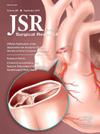与致命伤害和创伤中心分布相关的经济影响的全国分析。
IF 1.7
3区 医学
Q2 SURGERY
引用次数: 0
摘要
前言:本研究旨在研究创伤中心分布在国家层面的流行病学和经济影响,以实现更公平和更具成本效益的高质量创伤护理。方法:采用基于web的伤害统计查询和报告系统,以及美国人口普查局提供的州一级收入数据,对2018年至2022年美国创伤中心分布的流行病学和经济影响进行横断面研究。研究结果包括创伤性伤害和死亡的总成本、相关的个人收入损失、州税收损失、潜在生命损失年数(YPLL)以及因增加获得高级创伤护理而节省的潜在成本。结果:中西部地区一级和二级创伤中心数量最多,南部地区最少。经济分析表明,创伤中心密度高的地区人均医疗和生命损失费用较低。具体而言,东北地区的致命伤害和YPLL负担最低,而南方最高,与最低的创伤中心密度相关。在南部地区,最低分布的创伤中心与最高数额的国家所得税收入损失有关。结论:与可及性较低的地区相比,高级创伤护理可及性较高的地区致命伤害成本较低,包括个人收入损失、国家税收收入损失和YPLL减少。这些发现强调了优化创伤中心配置的经济和公共卫生效益,特别是在服务不足的地区。本文章由计算机程序翻译,如有差异,请以英文原文为准。
A National Analysis of the Economic Impact Associated With Fatal Injuries and Trauma Centers' Distribution
Introduction
This study aims to examine the epidemiological and economic impact of trauma centers’ distribution at the national level to achieve more equitable and cost-effective access to quality trauma care.
Methods
A cross-sectional study evaluating the epidemiological and economic impact of trauma centers’ distribution in the United States from 2018 to 2022, using the Web-based Injury Statistics Query and Reporting System, as well as state-level income data obtained from the United States Census Bureau. Study outcomes included the total cost of traumatic injuries and fatalities, associated personal income loss, state tax revenue loss, years of potential life lost (YPLL), and potential cost savings from increased access to advanced trauma care.
Results
The Midwest had the highest number of level I and II trauma centers, while the South had the lowest. Economic analysis showed that regions with higher trauma center density had lower per capita medical and life loss costs. Specifically, the Northeast had the lowest burden of fatal injuries and YPLL, while the South had the highest, associated with the lowest trauma center density. Within the South region, the lowest distribution of trauma centers was associated with the highest amount of lost state income tax revenue.
Conclusions
Regions with higher access to advanced trauma care were associated with lower costs of fatal injuries, including reduced personal income loss, state tax revenue loss, and YPLL, than regions with lower access. These findings underscore the economic and public health benefits of optimizing trauma center allocation, particularly in underserved regions.
求助全文
通过发布文献求助,成功后即可免费获取论文全文。
去求助
来源期刊
CiteScore
3.90
自引率
4.50%
发文量
627
审稿时长
138 days
期刊介绍:
The Journal of Surgical Research: Clinical and Laboratory Investigation publishes original articles concerned with clinical and laboratory investigations relevant to surgical practice and teaching. The journal emphasizes reports of clinical investigations or fundamental research bearing directly on surgical management that will be of general interest to a broad range of surgeons and surgical researchers. The articles presented need not have been the products of surgeons or of surgical laboratories.
The Journal of Surgical Research also features review articles and special articles relating to educational, research, or social issues of interest to the academic surgical community.

 求助内容:
求助内容: 应助结果提醒方式:
应助结果提醒方式:


